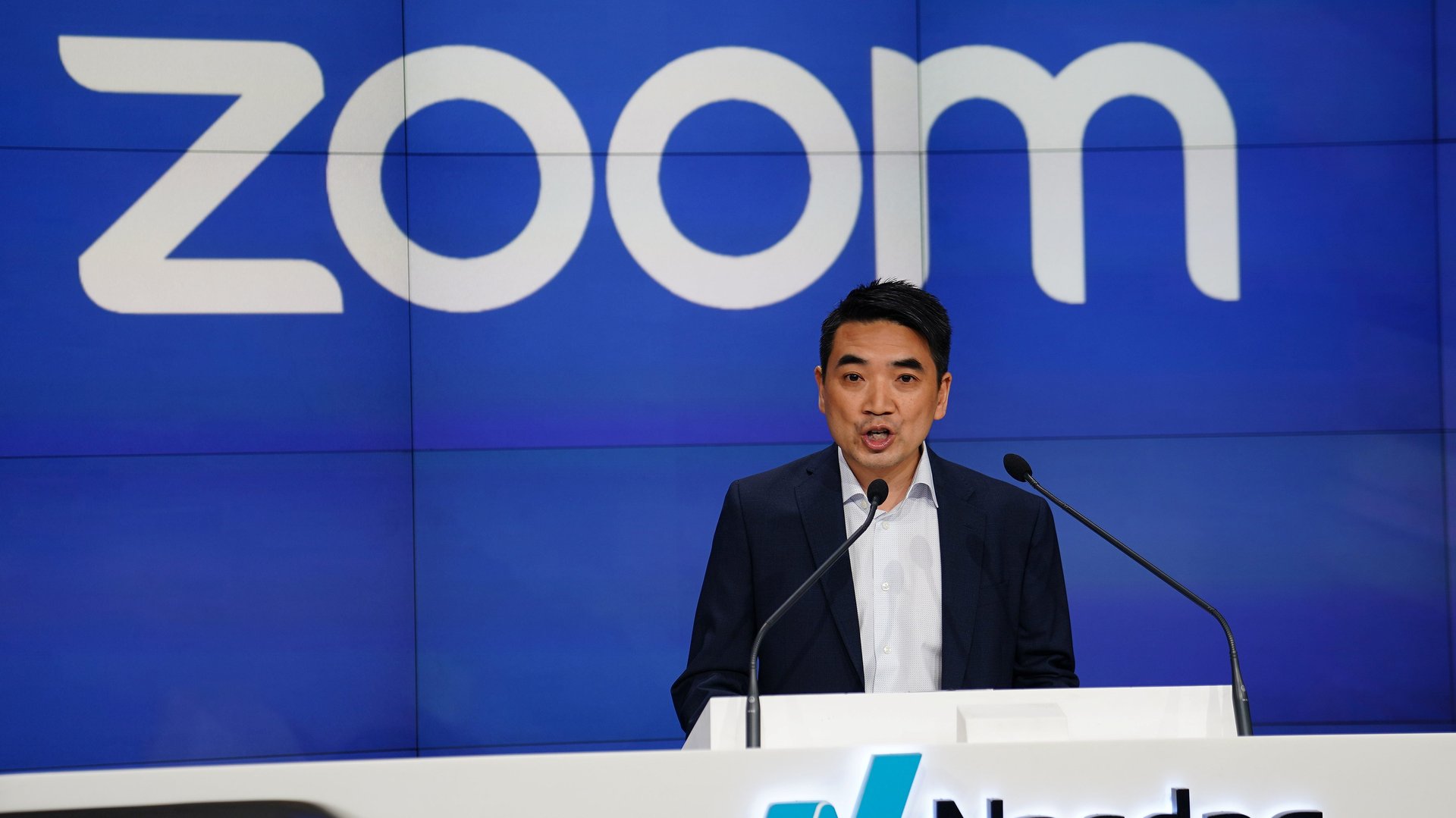The future of work according to Zoom
Zoom had a stellar first quarter, raking in nearly $1 billion in revenue, but with the pandemic subsiding in some parts of the world, the star of the Covid-era economy is readying for a future of work that’s at least somewhat more face-to-face.


Zoom had a stellar first quarter, raking in nearly $1 billion in revenue, but with the pandemic subsiding in some parts of the world, the star of the Covid-era economy is readying for a future of work that’s at least somewhat more face-to-face.
After blazing past incumbents to become synonymous with videoconferencing, the company is now talking about how the future of work will be somewhere between fully remote and fully in-person.
“Many customers I talk to are looking to create hybrid solutions as they seek to cautiously reopen some offices,” Zoom founder and CEO Eric Yuan said on an earnings call Tuesday. “Each industry, company, and individual varies in their optimal working model.”
What exactly is hybrid work?
Yuan emphasized that hybrid work is the future, but said there are many different models for how companies might treat remote and in-person work. When one analyst pressed him to define hybrid work, he said, “The definition of hybrid work is about flexibility—to give employees flexibility.”
A recent survey from Zoom and SurveyMonkey found that 65% of respondents, who had been working remotely during the pandemic, said a hybrid environment, defined as “a work-from-home policy that is more relaxed after the COVID-19 pandemic ends than it was before,” was “ideal.” But that 65% was virtually split between whether they wanted to default to working from home or from the office.
From Zoom phone to Zoom events
To accommodate a haphazard mix of people working in different environments, Zoom is rolling out new features to Zoom Rooms, its conference room display system, which aim to put virtual and remote participants on more equal footing. For example, a receptionist working from the home will be able to greet visitors to an office through a screen placed on the main desk.
It also announced Zoom Events, a forthcoming event management platform that will integrate remote and in-person participation. Meanwhile, Zoom Phone, its VoIP product, now has 1.5 million users—up from 1 million in January—and also added a physical appliance for offices.
Zoom even wants to blur the look and feel of zooming from home versus the office through its new Immersive View, though Quartz’s Nicolás Rivero called it “just as clunky as any of Zoom’s virtual backgrounds.”
Yuan said that his top business imperative this year is making sure Zoom serves all businesses as they open and return to their offices. “That’s why you see a lot of initiatives around that angle—either the conference room, or the phone, built-in chat, or meetings,” Yuan said.
Zoom is trying to sell itself as indispensable for the future of work. While that’s still to be proven, what is clear is that sales won’t be as exuberant. In the earnings call, Zoom CFO Kelly Steckelberg confirmed that she expects year-over-year revenue growth to fall to 50% in fiscal year 2022 from triple digits in 2021.
“We’re still very pleased with our guidance of 50% year-over-year growth, but, yes, this is going to be more of the new normal,” she said.